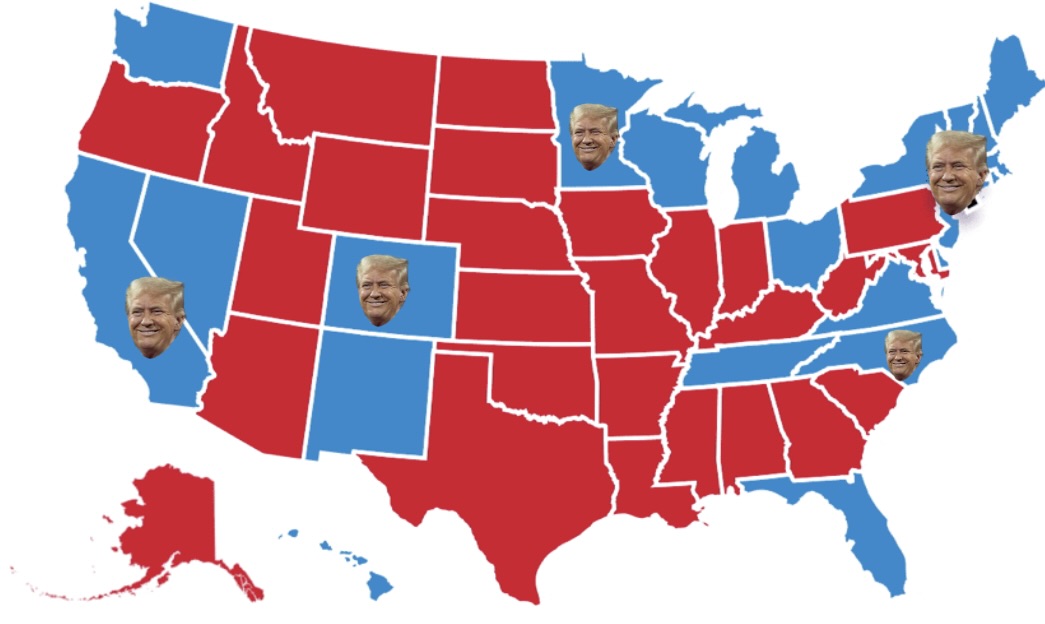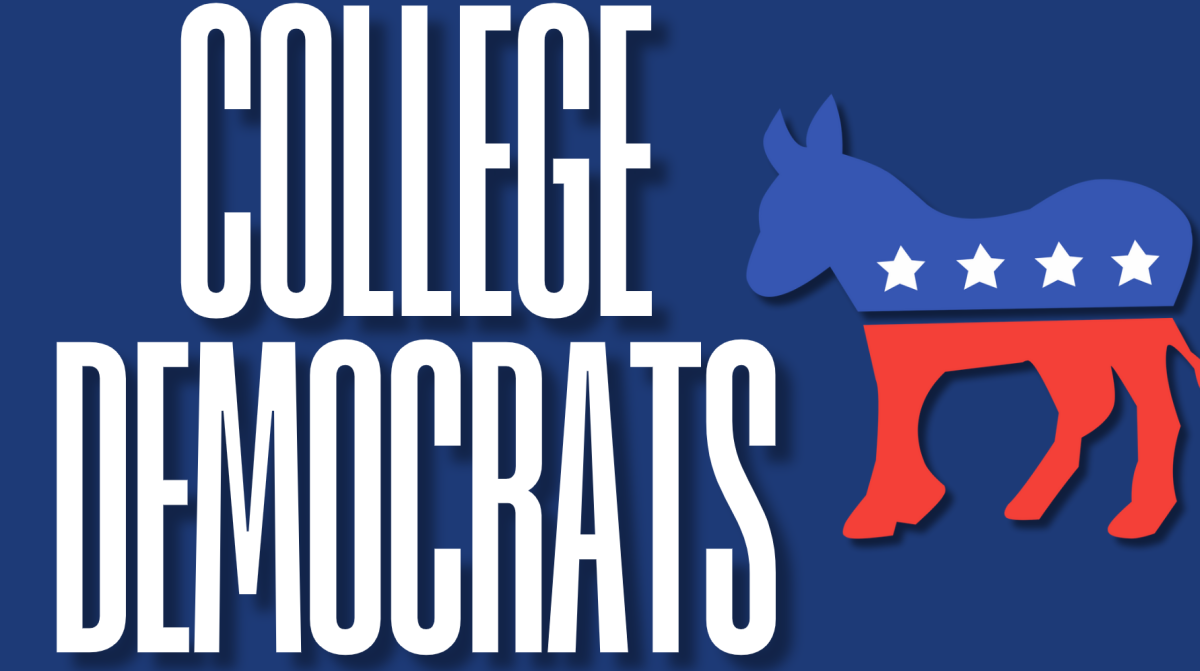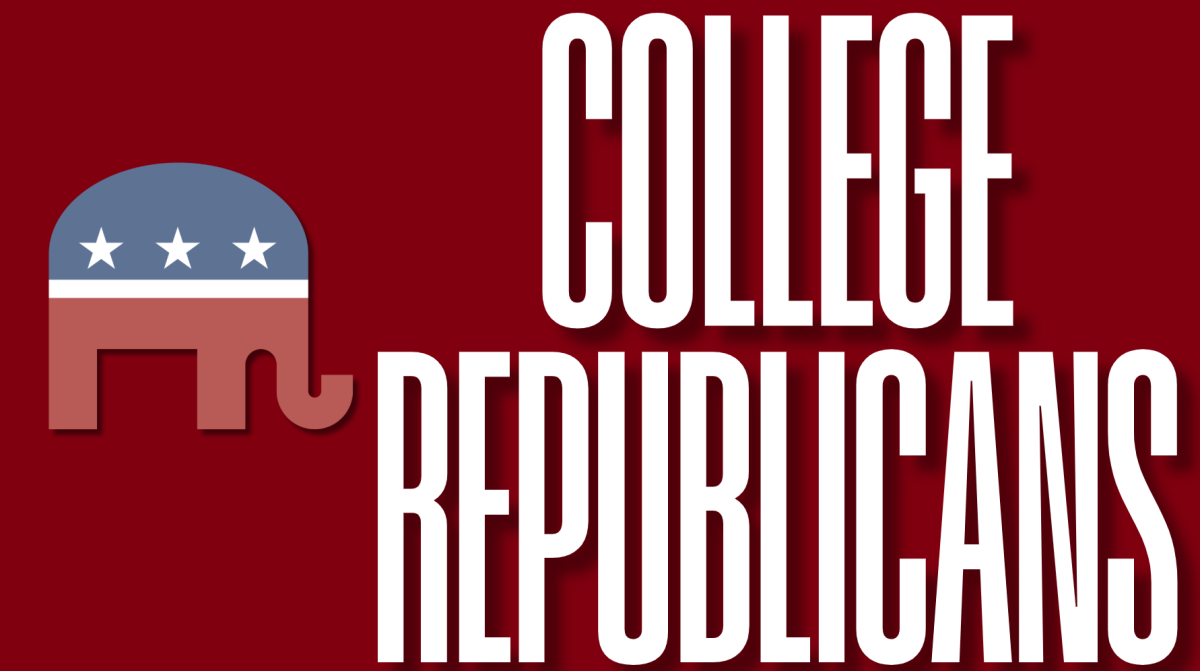Former President Donald Trump hosted a rally at Madison Square Garden in New York City on Sunday, Oct. 27, and it is a symptom of the greater variable at play for the Trump campaign: it knows no bounds.
In early October, NBC News reported that Trump was beginning to campaign in blue states. Since this headline appeared in the media, Trump has campaigned in some of the most “solid blue” states, like California, Colorado, Illinois and New York. These states are considered “solid blue” due to the fact that the last time a Republican presidential candidate won any of them was nearly two decades ago or more.
As far as concrete facts go, the last time a Republican won the state electoral vote in Illinois or California was in 1988, Colorado in 2004 and New York in 1984. Any other imaginable Republican candidate would never consider campaigning in any of these states like Trump has, let alone step one foot in them this close to the election. Republicans would normally agree that time spent in blue states is time well wasted. However, this election is far from normal.
The difference is that, regardless of where states currently poll, Trump is not leaving any state, county or district unturned. Covering how Trump campaigned in California in early October, The Associated Press noted that Trump would certainly lose the state despite spreading his campaign’s messaging to thousands of voters at a rally in Coachella. Even though Trump might lose the state of California, the element that most reporters and analysts in the media can’t grasp is why he’s doing rallies in these solid blue states.
With states such as Georgia, Nevada, Arizona, Michigan, Wisconsin and Pennsylvania still considered a “coin toss,” Mike Murphy, a Republican strategist, claimed in a segment on PBS, the strategy of Trump going to blue states is deeper than what’s presented at a first glance.
Undeniably, these core states have been crucial for any presidential candidate to obtain to push them past the 270 votes necessary to win the Electoral College. Any of these states are just as crucial to Trump and Vice President Kamala Harris as the sole state of Nevada was to former President George W. Bush in 2000. Without Nevada, Bush’s electoral count would have placed him five electoral votes behind Gore and would have lost him the presidency.
That being said, Trump’s campaign into blue states appears bizarre. Trump is deciding to spend so much time in a conservative’s no man’s land that Republican strategist Matthew Bartlett has criticized the decisions from Trump as being solely for the sake of “optics and vibes.”
Doubling down on Bartlett’s criticisms, some analysts would likely also argue that Trump holding rallies in the Bronx, Long Island and at Madison Square Garden is a move to shake up Harris’ headspace and put her on the defensive. An argument can also be made that Trump’s rallies in Democrat strongholds are his campaign’s cry for help to attract disgruntled Republicans who have flocked to the Democrat’s side.
However, many voters see these blue states’ rallies as an expansion of the platform that Trump seeks to bring with him to the Oval Office. For months, Trump’s campaign has honed in on a promise to “unite our country by bringing it to new and record levels of success,” as his campaign’s platform outlines.
Before even getting into office, Donald Trump has united Republicans while also attracting new supporters. An example of this is in the state of Arizona, where Senate candidate Kari Lake has received unanimous support from Republican leaders after Trump endorsed her. The most astounding effect of the Trump endorsement was how the moderate former Arizona Gov. Doug Ducey endorsed Lake after firing off a few shots at her during her 2022 gubernatorial run.
Building beyond Arizona and into the national scale, Trump has also been able to get key endorsements from prominent figures amongst Democrats, which has allowed him to further outline what unity under a second Trump term looks like. For instance, Robert F. Kennedy Jr. suspended his presidential campaign and endorsed Trump in August. For more than a year before this, Kennedy Jr. had been gaining traction with both disgruntled Republicans and Democrats, and offered himself as an exiled, traditional Democrat. So much so that his former party members affirmed his status as an outsider by seeking to keep him from appearing on ballots in some states when his campaign was still active.
Beyond Kennedy Jr., there are other influential figures who are building up support for Trump as well. Tulsi Gabbard not only switched from being a rising star in the Democrat Party to being an independent and then to a Republican, but has now fully endorsed Trump. Imam Belal Alzuhairi and other leaders of Michigan’s Muslim community fully endorsed Trump, representing a voting block that leans heavily in favor of Democrats, as outlined by Pew Research. To boot, the former Democratic Illinois Gov. Rod Blagojevich endorsed Trump. Amongst the many endorsements that Trump has gained, Blagojevich’s is electrifying as the former governor had previously won the governorship of Illinois with 62% of his state’s support.
The momentum building behind Trump is unparalleled and undoubtedly bolstering him to continue his campaign’s reach into every American’s consideration this election. That is why Trump is in blue states; he wants to continue to reach out to all Americans, not just those who would stereotypically support him.
If anything can be said about Trump’s strategy to appeal to voters in blue states, it is that Trump clearly wants to be a president for all Americans, not just those in red states.
Michael Duke, GSB ’26, is a business administration major from Scottsdale, Ariz.








































































































































































































